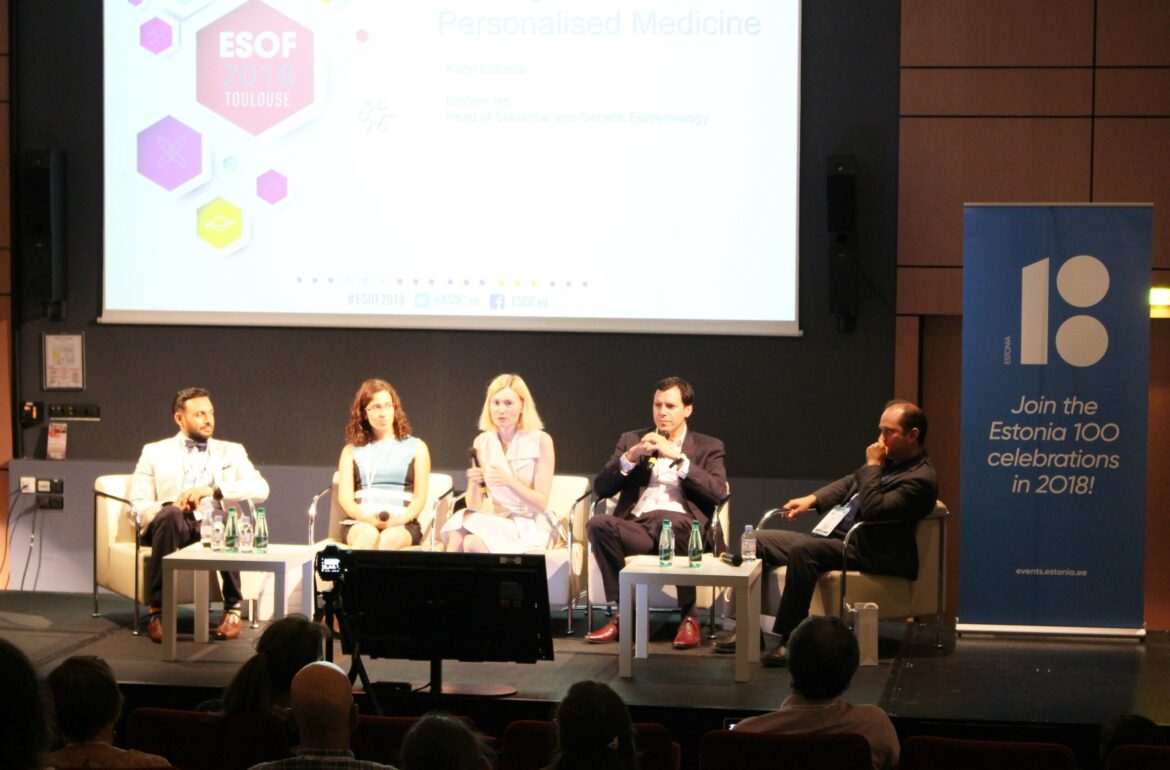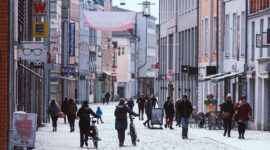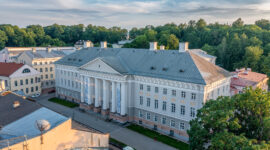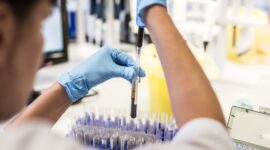Estonia might be a strong digital state, but to achieve the e‑health capability we need the additional data that is being gathered abroad, said the Minister of Health and Labour, Riina Sikkut. Estonian geneticists, together with the minister and international entrepreneurs, raised this topic at the ESOF science forum that took place in Toulouse.
Why is it important to introduce our achievements outside of Estonia?
In addition to the general need to uphold our reputation as a digital state that is at the forefront of e-health, we should also show what we are working on. If we want to reap all the benefits from either the development of science or its application in health care, we also need access to the information being gathered abroad.
We need data and experience to move across borders, but we cannot do it alone. Even now, doctors are complaining that it is difficult to deal with rare diseases in Estonia, as they meet patients with such diseases perhaps only twice a year. It is difficult to maintain competence like this.
But if we had a decision support system that didn’t operate only on the data of one doctor or of Estonia, but also took into account how these patients with the same diagnosis have been treated in the rest of the world and which treatments are efficient. If we could use this information in the treatment of our patients, then I can see how it could benefit us.
What kind of feedback have you received at the science forum about the field of personalised medicine?
Estonia is several steps ahead. It is extraordinary that we already have 52,000 gene samples in our Genome Center and personalised feedback is being given based on these. Other countries are in the process of creating their own biobanks and collecting gene samples, but we are already at the stage of feedback forms. We are counselling people and giving them information on why some medications work for them or not, and how to adjust the amount of medicine to suit them.
A good example of this is patients with hereditary high cholesterol who have started statin therapy. It’s extraordinary, but that is the direction everyone will actually be moving in.
If we are several steps ahead, what can we export in the field of medicine and how much is being done?
I think that the Genome Center is doing a great job and we are very well known for our digital prescriptions. But we cannot rest on our laurels because everyone else is developing as well. If we could link the genetic information to the patient’s digital record and their health behaviour, and derive valuable recommendations for treatment or behavioural changes from this information – if we could get all these algorithms set and share this information with others, it would be superb.
When will personalised medicine actually become a reality and what are the main changes it will bring?
Personalised medicine is already benefiting the gene donors who gave a gene sample ten years ago and have now received their feedback. As Lili Milani said on the stage today, there are people on whom depression medications have not had any effect so far. But knowing the patient’s genetic information, we can understand why that is.
We will know whether there is another medication that would work on them or whether the amount administered needs to be changed. We also have people with high hereditary cholesterol levels whose risk of heart disease decreases significantly if they start taking statins at a young age. Personalised medicine is actually already working.
Abroad, personalised medicine is mostly spoken of in the context of expensive cancer treatments. Meaning that there is effective medicine suitable specifically for this cancer mutation, which is very expensive. But personalised medicine is not limited to only this. In Estonia, analysis of genetic information from a blood sample costs €50. Based on this analysis, a personal feedback form is compiled and the person will receive 40 minutes of counselling to be able to read this form. It is not as expensive as cancer treatment, but it is still personalised.
When looking at Estonia’s plans for the following years, a decision support system will be developed for family physicians, which will help tie together the genetic information and the information from the patient’s records and health behaviour, and help the physicians give personalised treatment and behaviour recommendations. This will affect many people. We are not talking about a few dozen cancer patients, but about all the people who go to the family physician.
Is personalised medicine going to make treatment cheaper or more expensive?
All new things are initially expensive, especially as they are seldom used, and this is new technology. The price of the first gene sequencings in Estonia was also tens of thousands, but now, sequencing one gene costs about a thousand dollars and the prognosis given today on stage was that it will go down to a hundred dollars per person in the following years. The more we use the new technologies, the more manufacturers there will be, and when that happens, the price will decrease drastically. It is true that personalised cancer treatment is expensive, but when talking about prevention, it will be cheaper in the long run. There is no single answer, but there is no way back in my opinion.
What would be the alternative? That we do not use personalised medicine and let people keep taking the same medicine that works for some and not for others? Or that we do not want to link the information available in separate databases together, and why couldn’t this information be on paper altogether? Today, it is hard to imagine that we would still have paper referrals and that anyone would actually want them. We can be sceptical about the future but when we look back in ten years, we’ll see there is no other option.
For the first time, Estonia participated with its own session in the Science to Business programme at the international EuroScience Open Forum (ESOF) that took place in Toulouse. The session focused on the possibilities for involving personalised medicine and gene testing in the promotion of the quality of health and life. The session is part of the international programme for the 100th anniversary of the Republic of Estonia.
The translation of this article from Estonian Public Broadcasting science news portal Novaator was funded by the European Regional Development Fund through Estonian Research Council.
 Back
Back



